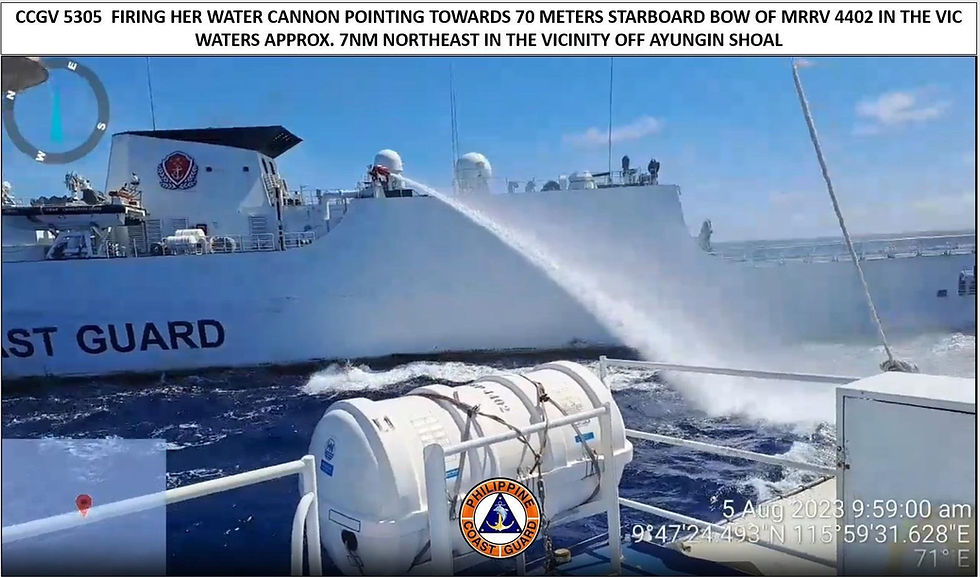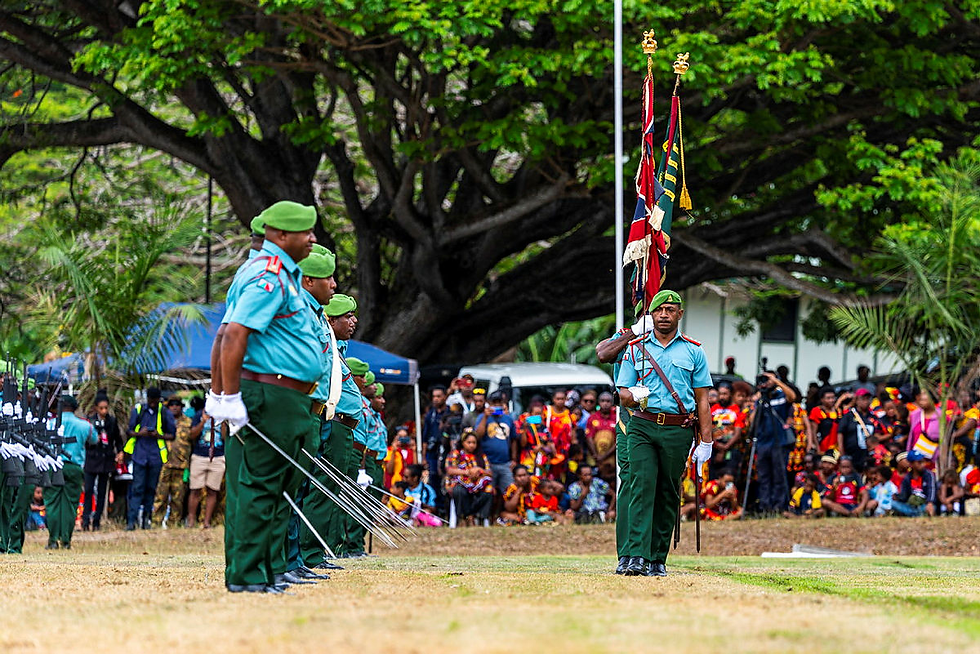Australia-South Korea: Thecase for a new maritime focus
- Jennifer Parker

- May 30
- 4 min read
29 May 25 | Jennifer Parker
The naval relationship between the two nations has plateaued, but there’s a way to regain momentum.

When HMAS Toowoomba manoeuvred alongside ROKS Gang Gam-chan during Exercise Haidoli Wallaby in November 2023, the image crystallised a decade of quiet progress in Australia-Republic of Korea (ROK) naval relations. Ship visits are now routine and the biennial foreign and defence minister’s 2 + 2 dialogue nominates maritime security as a top priority. Yet despite being well-placed to achieve greater interoperability, especially technical interoperability (that is, the ability of hardware and software systems to communicate and work together), the naval relationship has in some ways plateaued.
The establishment of a working group on naval interoperability could help address this, and reap the benefits of parallel naval modernisation efforts and increasing strategic alignment.
A decade ago, the RAN’s relationships with both the ROKN and Japan’s Maritime Self-Defence Force (JMSDF) stood at roughly the same embryonic stage; each featured only a handful of bilateral exercises and broad aspirations for closer ties. Since then, a commitment to interoperability has propelled the RAN–JMSDF partnership far ahead, generating frequent joint exercises and increasing operational and technical familiarity. But progress with the ROKN has largely plateaued.
Three factors make deeper Australia–ROK naval integration pressing. First, both governments now frame maritime security as existential. ROK’s 2023 National Security Strategy elevates the safeguarding of sea-lines of communication (Korea's primary maritime routes used for trade, logistics, and naval operations) to equal footing with deterring North Korea. Meanwhile, Australia’s 2024 National Defence Strategy re-oriented the Australian Defence Force towards a maritime posture.
The Australia–South Korea naval partnership is important to each country’s broader Indo-Pacific objectives. To offer a genuine capability edge, it needs a naval interoperability framework.
Second, each navy is modernising at pace. The ROKN’s Navy Vision 2045 promises Aegis destroyers, uncrewed vehicle command ships and an artificial-intelligence-enabled “Smart Fleet”. The RAN is preparing to operate Virginia-class nuclear-powered submarines under AUKUS, expand its surface combatant force and restore continuous shipbuilding.
Third, almost every tonne of Korean and Australian trade transits the increasingly contested maritime domain. Any severe interruption to maritime trade would jolt both economies within days.
Rising ROKN–RAN activity over the last decade has lifted procedural, human and informational interoperability from its embryonic stages. This has occurred through the anti-submarine exercise Exercise Haidoli Wallaby, joint participation in the Pacific Vanguard integrated air-and-missile-defence exercise, and the Talisman Sabre series. These activities are supported by Memoranda of Understanding (MoUs) on both science and technology, and logistics. All of this is complemented by the 2023 signing of an MoU between the RAN and ROKN.
The bilateral naval relationship should be generating much greater strategic value.
However, a targeted approach could deliver quicker, more concrete gains in interoperability. Procedural, human and informational links have advanced, but technical interoperability still lags, an area ripe for both navies to exploit.
With both South Korea and Australia now prioritising continuous shipbuilding and the defence of sea lanes, the bilateral naval relationship should be generating much greater strategic value. The two fleets already share baseline capabilities. Each fields US-derived combat-systems – that is, the ship’s “brain” that integrates sensor data with its weapons systems. Aegis combat systems operate on both Korean destroyers and Australia’s Hobart class. Upcoming fleet expansions present a rare opportunity to “design in” further technical interoperability.
Bridging the gap means treating interoperability as a strategic objective of the two navies, not just a by-product of goodwill. The establishment of a RAN-ROKN working group resourced to develop and maintain an interoperability roadmap and reporting biennially to ministers would generate a more structured pathway to interoperability between the two navies.
Capability development should be another priority. South Korea's robotics prowess and Australia's emphasis on undersea capabilities under Pillar II of AUKUS create an obvious pathway to co-fund uncrewed surface and uncrewed underwater vehicles. New industrial developments can reinforce the effort. Hanwha’s recent 9.9% stake in Austal highlights South Korea’s appetite for deeper collaboration. Co-producing mine-warfare or fleet-auxiliary vessels in Korean shipyards would swiftly plug key RAN capability gaps.
Australia and South Korea have already elevated bilateral ties through a Comprehensive Strategic Partnership. The next defence ministers’ meeting should unveil a phased naval interoperability blueprint with measurable milestones. The opportunity exists and the strategic rationale is compelling.
The Australia–South Korea naval partnership is important to each country’s broader Indo-Pacific objectives. To offer a genuine capability edge, it needs a naval interoperability framework to institutionalise the ability to operate together. Australia and Japan have shown what is possible. Australia will need to continue to broaden its naval relationships and interoperability to counter the increasingly contested maritime domain. The ROKN–RAN relationship offers significant potential. Now is the time to develop a naval interoperability working group that can translate strategic aims into operational outcomes.



Comments